Structural Design and Performance Optimization of Green Concrete Based on Recycled Pumice and Modified Rubber Powder
Abstract
1. Introduction
2. Related Works
3. Material Preparation
3.1. Selection and Preparation of Modifiers
3.2. Preparation and Properties of Recycled Pumice
4. Experimental Methods
4.1. Preparation of Concrete
4.2. Compressive Strength Test of Concrete
4.3. Flexural Strength Test of Concrete
4.4. Freeze-Thaw Cycle Experiment of Concrete
5. Application of External Blending Method in Recycled Coarse Aggregate Concrete
6. Physical and Mechanical Properties of Modified Rubber Recycled Concrete
7. Application and Optimization of Recycled Pumice in Green Concrete
7.1. Application of Recycled Pumice in Green Concrete
7.2. Optimization of Green Concrete Performance by Recycled Pumice
8. Conclusions
Author Contributions
Funding
Institutional Review Board Statement
Informed Consent Statement
Data Availability Statement
Conflicts of Interest
Abbreviations
| ANN | Artificial Neural Networks |
| GA-ANN | Genetic Algorithm and Artificial Neural Networks |
| SVR | Support Vector Regression |
| SCBA-SF | Sugar Cane Bagasse Ash and Silica Fume |
| NMR | Nuclear Magnetic Resonance |
| HSC | High-Performance Concrete |
| VPP | Volcanic Pumice Powder |
| PF | Polypropylene Fiber |
References
- Wu, Z.; Zhang, N. A Literature Survey of Green and Low-Carbon Economics Using Natural Experiment Approaches in Top Field Journal. Grace 2023, 1, 2–14. [Google Scholar] [CrossRef]
- Usman, A.M.; Abdullah, M.K. An Assessment of Building Energy Consumption Characteristics Using Analytical Energy and Carbon Footprint Assessment Model. Grace 2023, 1, 28–40. [Google Scholar] [CrossRef]
- Wang, Y.; Zeng, S. Waste Haven Transfer and Poverty-Environment Trap: Evidence from EU. Grace 2023, 1, 41–49. [Google Scholar] [CrossRef]
- Mater, Y.; Kamel, M.; Bakhoum, E. ANN-Python prediction model for the compressive strength of green concrete. Constr. Innov.-Engl. 2023, 23, 340–359. [Google Scholar] [CrossRef]
- Kumar, A.S.; Chithambar Ganesh, A. Reduction of hazardous incinerated bio-medical waste ash and its environmental strain by utilizing in green concrete. Water Sci. Technol. 2021, 84, 2780–2792. [Google Scholar] [CrossRef] [PubMed]
- Pan, L.; Guo, X. Predicting compressive strength of green concrete using hybrid artificial neural network with genetic algorithm. Struct. Concr. 2022, 24, 1980–1996. [Google Scholar] [CrossRef]
- Landa-Ruiz, L.; Santiago-Hurtado, G.; Villegas-Apaez, R.; Baltazar-Zamora, M.A. Evaluation of the behavior of the physical and mechanical properties of green concrete exposed to magnesium sulfate. Eur. J. Eng. Technol. Res. 2020, 5, 1353–1356. [Google Scholar]
- Ibrahim, M.; Maslehuddin, M. Influence of pore structure on the properties of green concrete derived from natural pozzolan and nanosilica. J. Sustain. Cem. Based Mater. 2020, 9, 233–257. [Google Scholar] [CrossRef]
- Alsaedy, S.M.; Aljalawi, N. The effect of nanomaterials on the properties of limestone dust green concrete. Eng. Technol. Appl. Sci. Res. 2021, 11, 7619–7623. [Google Scholar] [CrossRef]
- Rashad, A.M. An overview of pumice stone as a cementitious material–the best manual for civil engineer. Silicon 2020, 13, 551–572. [Google Scholar] [CrossRef]
- Zeyad, A.M.; Khan, A.H.; Tayeh, B.A. Durability and strength characteristics of high-strength concrete incorporated with volcanic pumice powder and polypropylene fibers. J. Mater. Res. Technol. 2020, 9, 806–818. [Google Scholar] [CrossRef]
- Szabó, R.; Reaction, S.K. Structure and properties of eco-friendly geopolymer cement derived from mechanically activated pumice. Ceram. Int. 2023, 49, 6756–6763. [Google Scholar] [CrossRef]
- Sari, N.H.; Thiagamani, S.M.K.; Tamimi, S.; Rangappa, M. Evaluation of mechanical, S.S., thermal and morphological properties of corn husk modified pumice powder reinforced polyester composites. Polym. Polym. Compos. 2022, 43, 1763–1771. [Google Scholar] [CrossRef]
- Giachetti, T.; Wright, H.M. The products of primary magma fragmentation finally revealed by pumice agglomerates. Geology 2021, 49, 1307–1311. [Google Scholar] [CrossRef]
- Taheri-Ledari, R.; Shalan, A.E. Convenient conversion of hazardous nitrobenzene derivatives to aniline analogues by Ag nanoparticles, stabilized on a naturally magnetic pumice/chitosan substrate. RSC Adv. 2020, 10, 43670–43681. [Google Scholar] [CrossRef]
- Yılmaz, S.; Şahan, T. Improved anaerobic digestion activity of poultry dung with pumice-supported trace elements: Focus on the statistical optimization approach. Biomass Convers. Bior. 2022, 13, 2469–2486. [Google Scholar] [CrossRef]
- Soltani, S.S.; Foroumadi, A. Synthesis and characterization of a supported Pd complex on volcanic pumice laminates textured by cellulose for facilitating Suzuki–Miyaura cross-coupling reactions. RSC Adv. 2020, 10, 23359–23371. [Google Scholar] [CrossRef] [PubMed]
- Kazemian, M.; Ramezanianpour, A.M. Effects of cyclic carbonation and chloride ingress on durability properties of mortars containing Trass and Pumice natural pozzolans. Struct. Concr. 2021, 22, 2704–2719. [Google Scholar] [CrossRef]
- Ibrahim, T.K.; Yawas, D.S.; Adebisi, A.A. Manufacturing and optimization of the effect of casting process parameters on the compressive strength of aluminum/pumice/carbonated coal hybrid composites: Taguchi and regression analysis approach. Int. J. Adv. Manuf. Technol. 2023, 125, 3401–3414. [Google Scholar] [CrossRef]
- Kurt Albayrak, Z.N.; Gencer, G. The usability of clay/pumice mixtures modified with biopolymer as an impermeable liner. KSCE J. Civ. Eng. 2020, 25, 28–36. [Google Scholar] [CrossRef]
- Hashmi, A.F.; Khan, M.S.; Bilal, M.; Shariq, M.; Baqi, A. Green concrete: An eco-friendly alternative to the OPC concrete. Construction 2022, 2, 93–103. [Google Scholar] [CrossRef]
- Siddika, A.; Amin, M.R.; Rayhan, M.A.; Islam, M.S.; Al Mamun, M.A.; Alyousef, R.; Amran, Y.M. Performance of sustainable green concrete incorporated with fly ash, rice husk ash, and stone dust. Acta Polytech. 2021, 61, 279–291. [Google Scholar] [CrossRef]
- Ning, K.; Tang, Z.; Xie, P.; Hu, J.; Fu, Z. Study on Silicone Rubber Composite Insulator Modified by High-Energy Electron Beam Irradiation. IEEE Trans. Dielectr. Electr. Insul. 2022, 30, 31–40. [Google Scholar] [CrossRef]
- Chandio, S.A.; Memon, B.A.; Oad, M.; Chandio, F.A.; Memon, M.U. Effect of fly ash on the compressive strength of green concrete. Eng. Technol. Appl. Sci. 2020, 10, 5728–5731. [Google Scholar] [CrossRef]
- Zhu, X.; Zhou, Y.; Zhang, Y.; Zhou, L.; Huang, X. The Effects of Nano-ZrO2 on the Mechanical and Electrical Properties of Silicone Rubber and a Corresponding Mechanism Analysis. IEEE Trans. Dielectr. Electr. Insul. 2022, 29, 2218–2226. [Google Scholar] [CrossRef]
- Chun, P.-J.; Hayashi, S. Development of a Concrete Floating and Delamination Detection System Using Infrared Thermography. IEEE/ASME Trans. Mechatron. 2021, 26, 2835–2844. [Google Scholar] [CrossRef]
- Omar, A.; Muthusamy, K. Concrete Industry, Environment Issue, and Green Concrete: A Review. Construction 2022, 2, 1–9. [Google Scholar] [CrossRef]
- Rao, M.S.C.; Vijayalakshmi, M.M.; Praveenkumar, T.R. Behaviour of green concrete (blended concrete) using agro-industrial waste as partial replacement of cement along with nanoparticles. Appl. Nanosci. 2021, 13, 2285–2293. [Google Scholar] [CrossRef]
- Yeganeh, B.; Khatamgooya, A. The feasibility study of stabilizing the automotive paint sludge by recycling, to produce green concrete blocks, considering environmental and mechanical factors. J. Mater. Cycles Waste 2022, 25, 931–943. [Google Scholar] [CrossRef]
- Buller, A.H.; Husain, N.M.; Oad, M.; Memon, B.A.; Sodhar, I.N. Investigating the Deflection and Strain of Reinforced Green Concrete Beams Made with Partial Replacement of RCA under Sustained Loading. Eng. Technol. Appl. Sci. 2022, 12, 9203–9207. [Google Scholar] [CrossRef]
- GB/T 50082-2009; Standard for Test Methods of Long-Term Performance and Durability of Ordinary Concrete. China Academy of Building Research: Beijing, China, 2009.
- Valls-Val, K.; Bovea, M.D. Carbon footprint in Higher Education Institutions: A literature review and prospects for future research. Clean. Technol. Environ. 2021, 23, 2523–2542. [Google Scholar] [CrossRef] [PubMed]
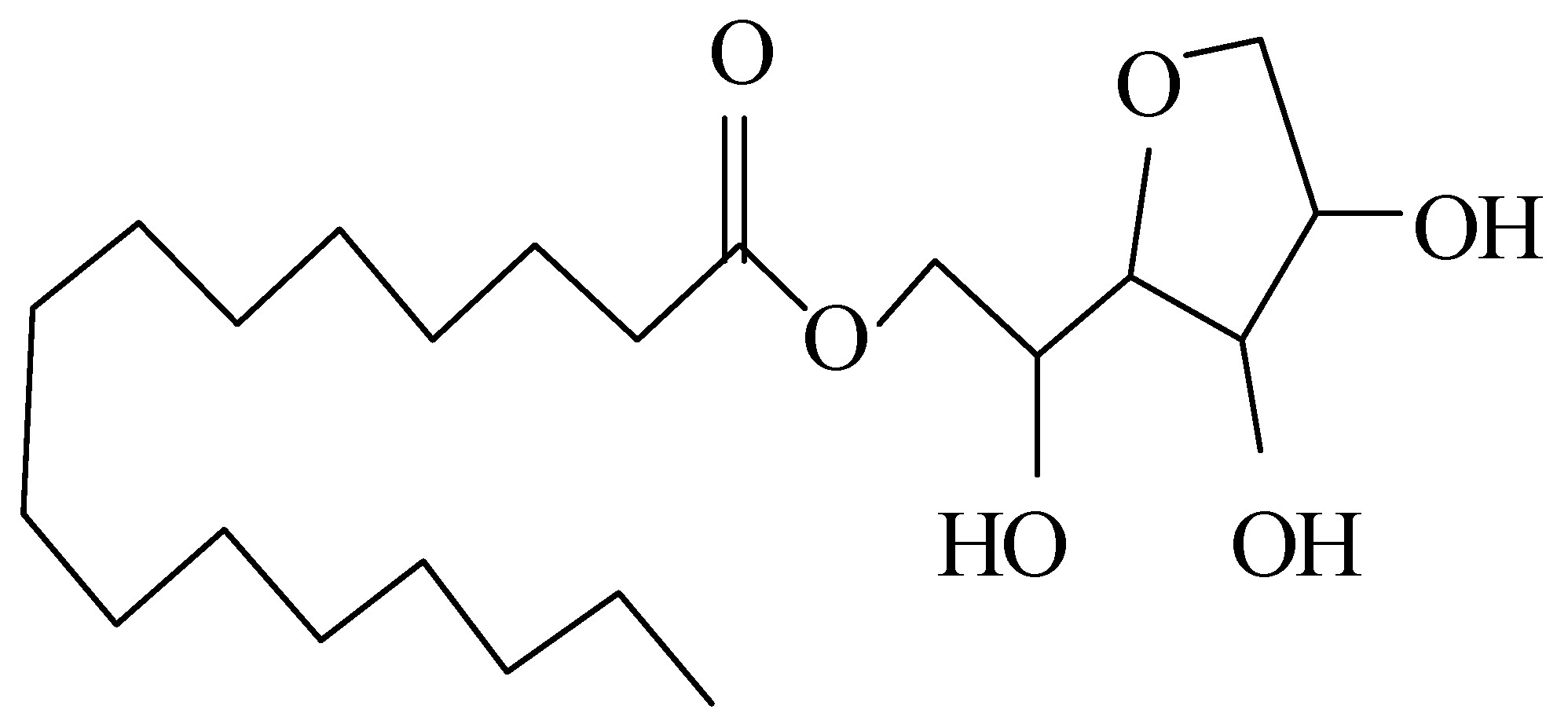
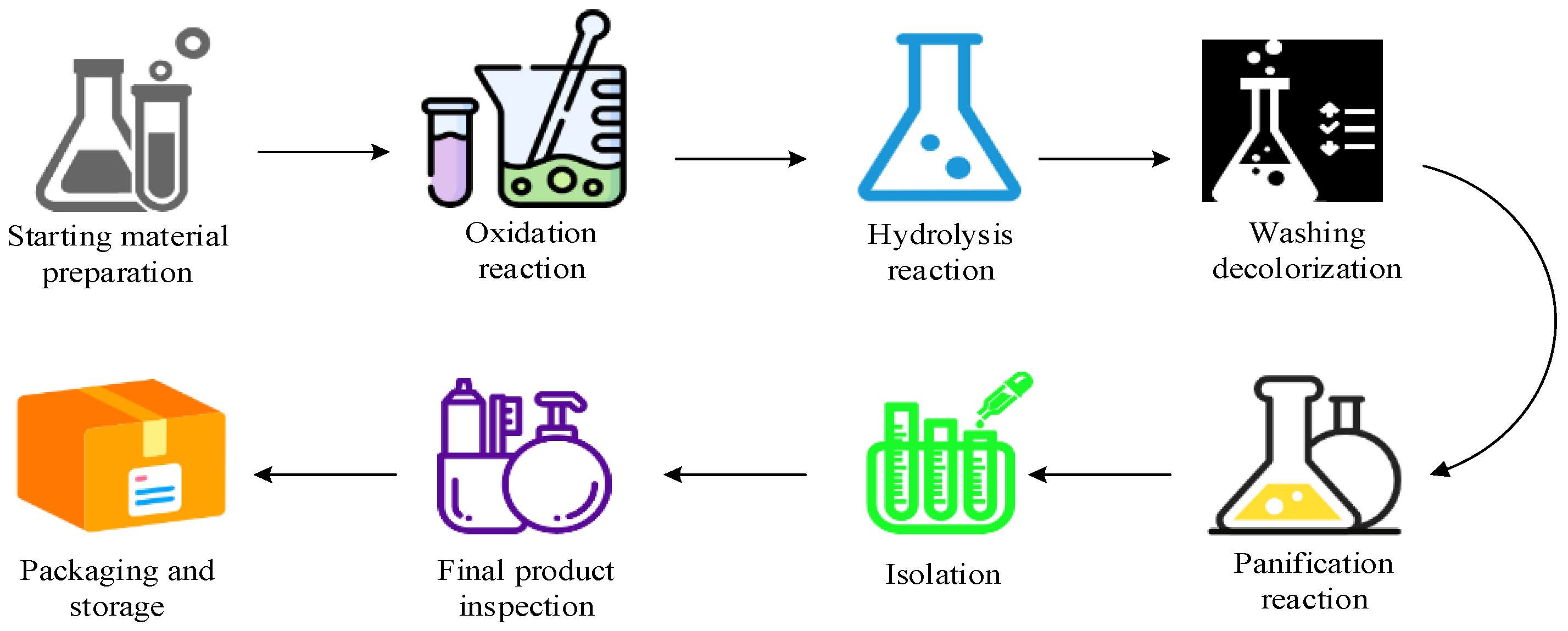
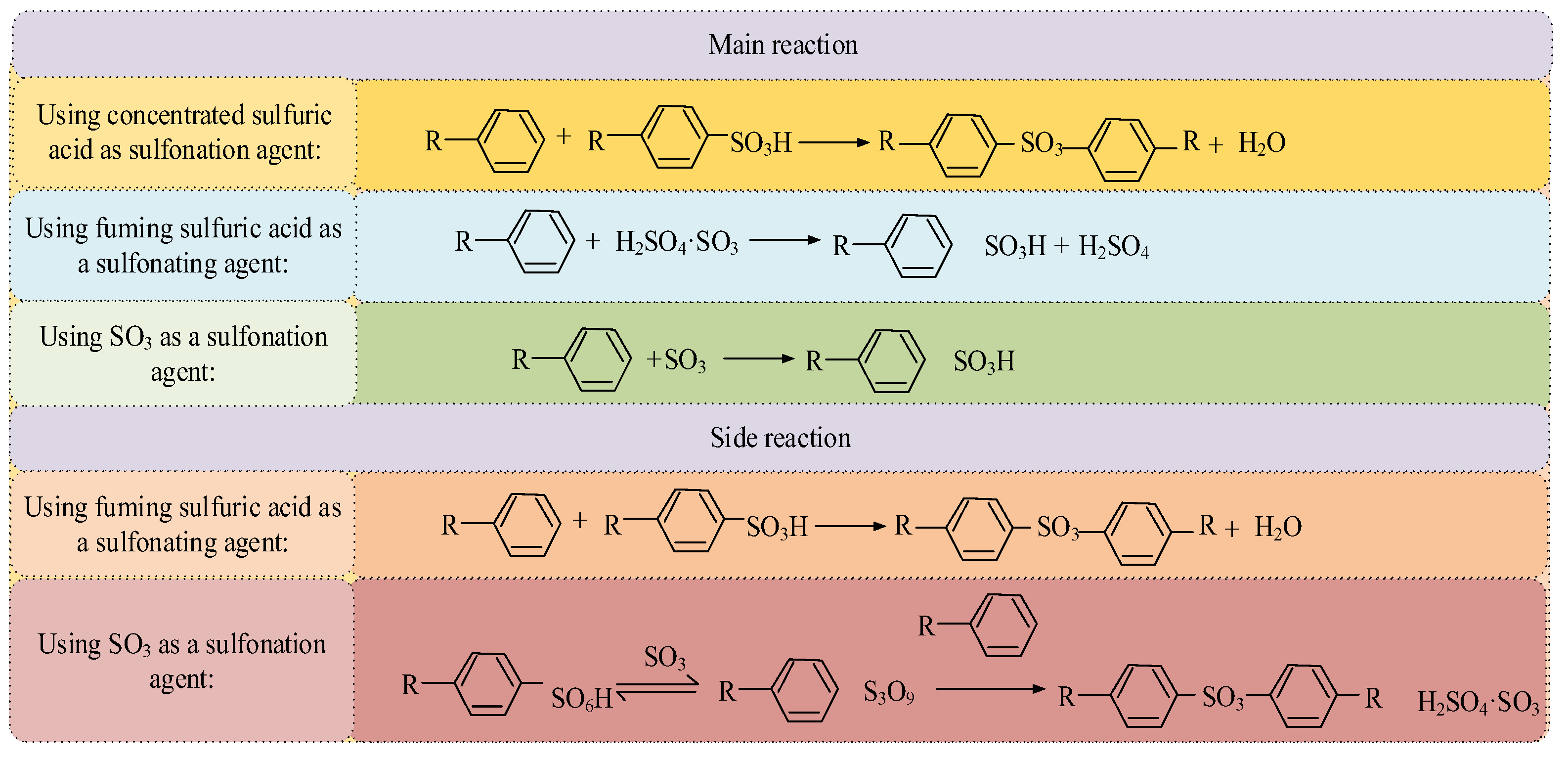
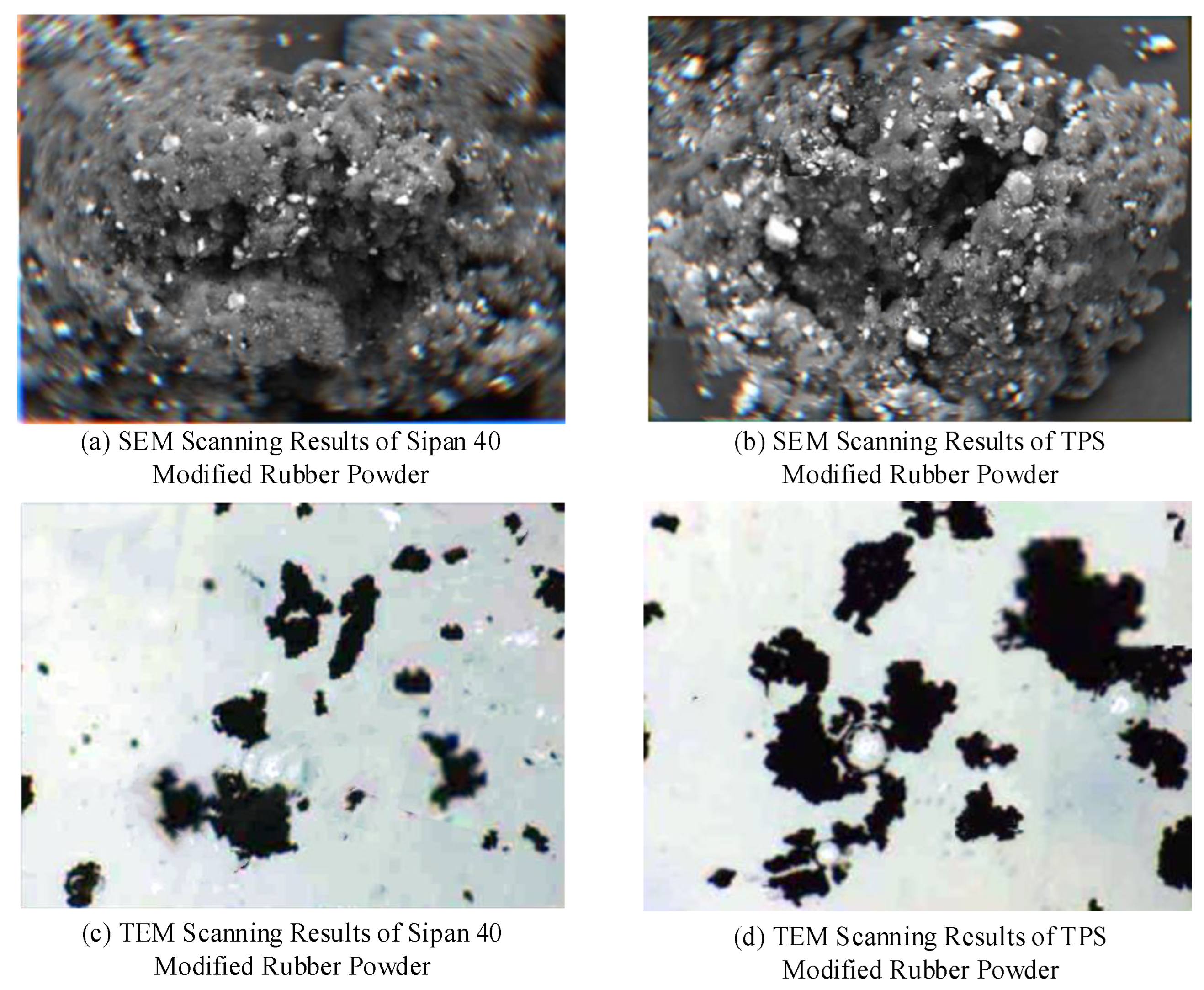
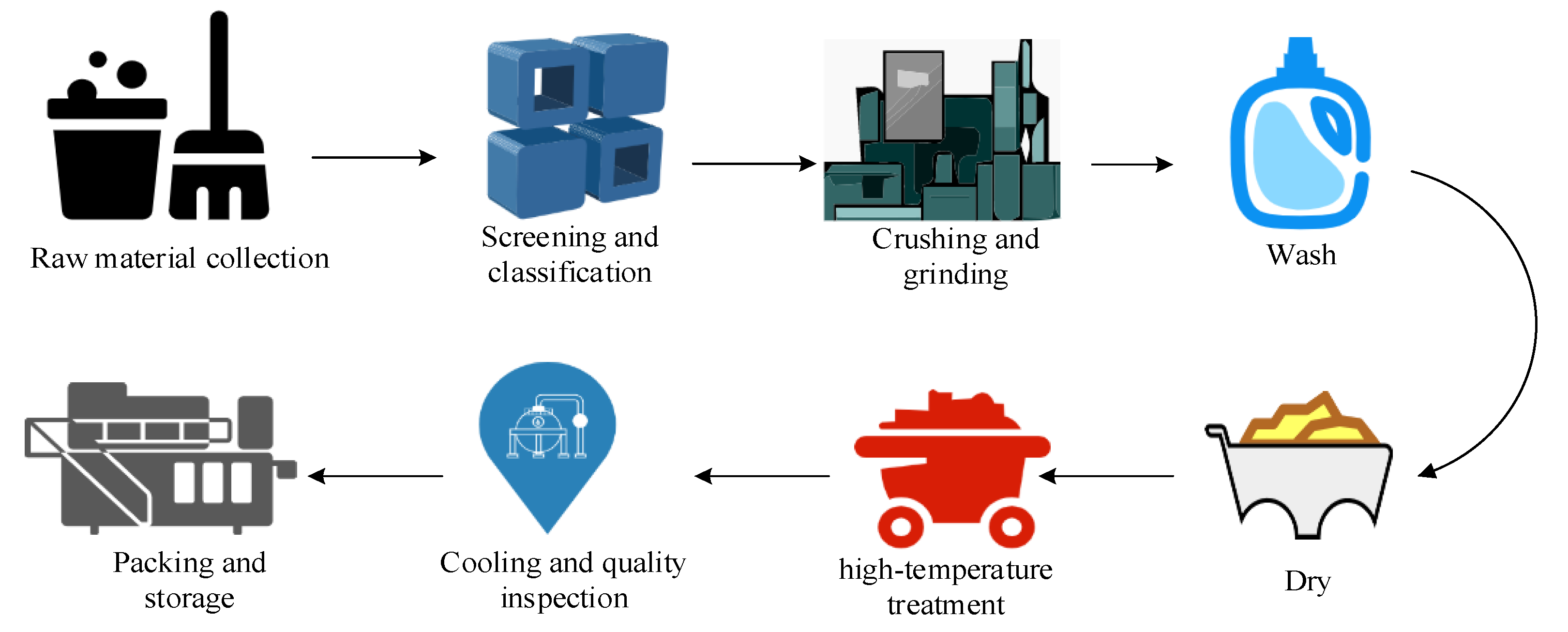
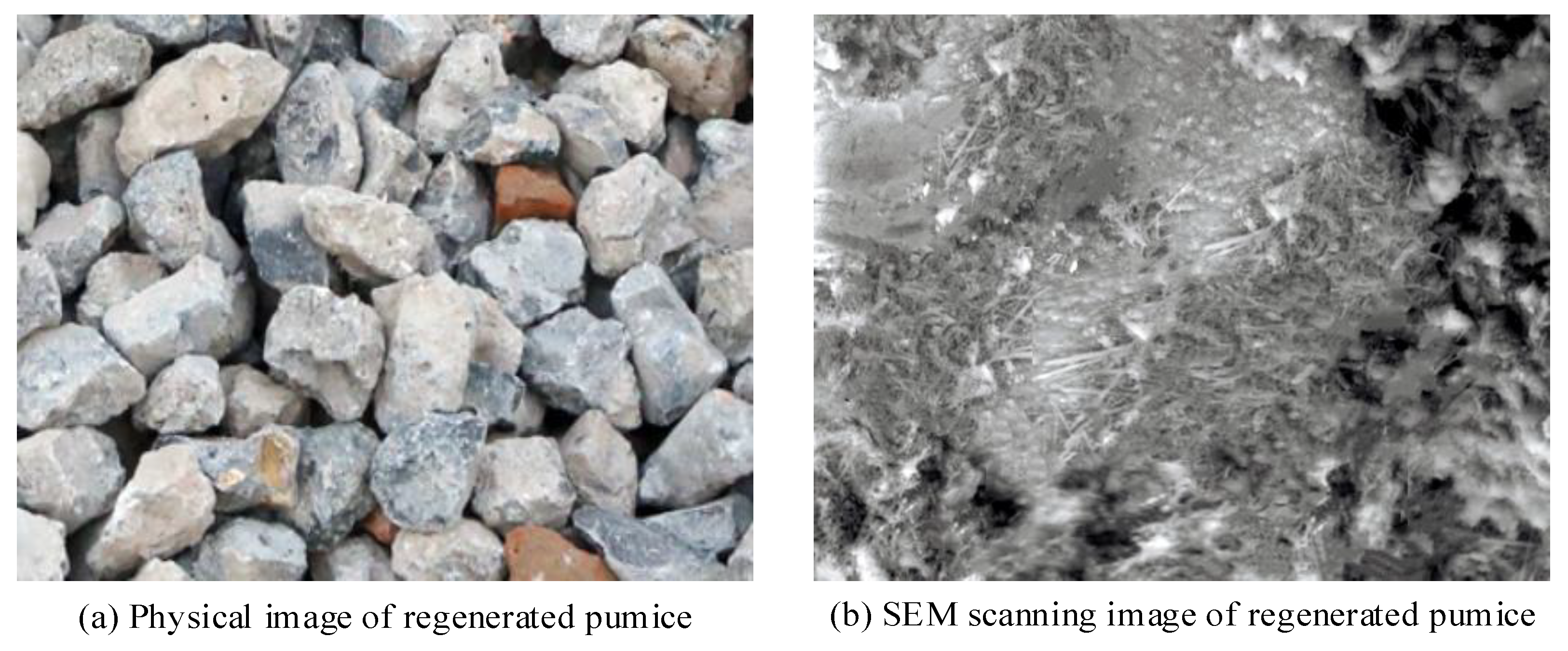

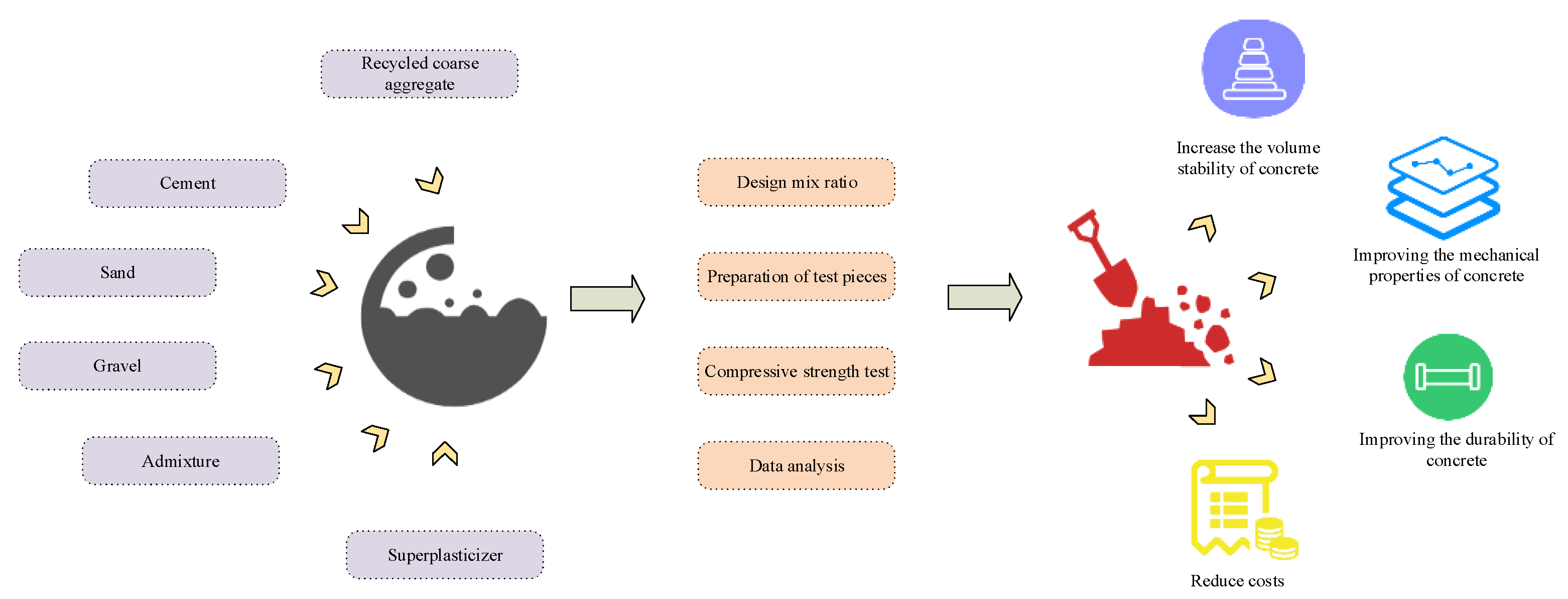
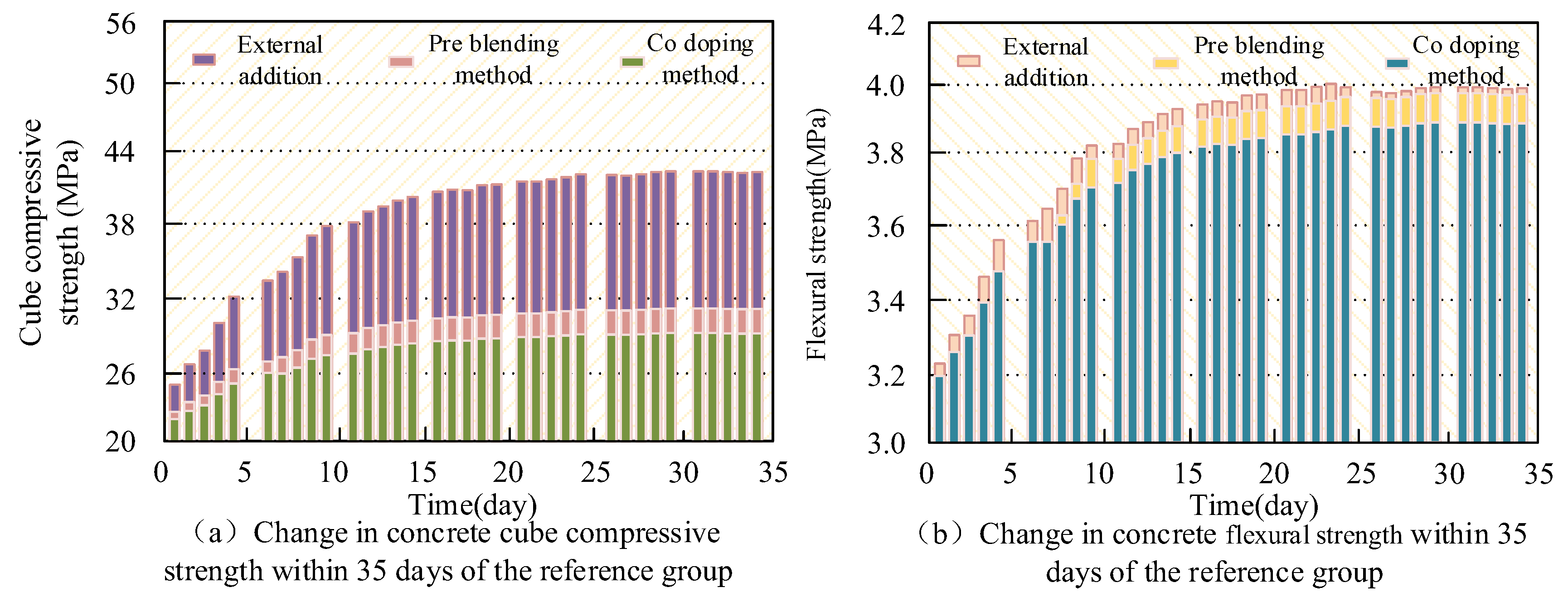

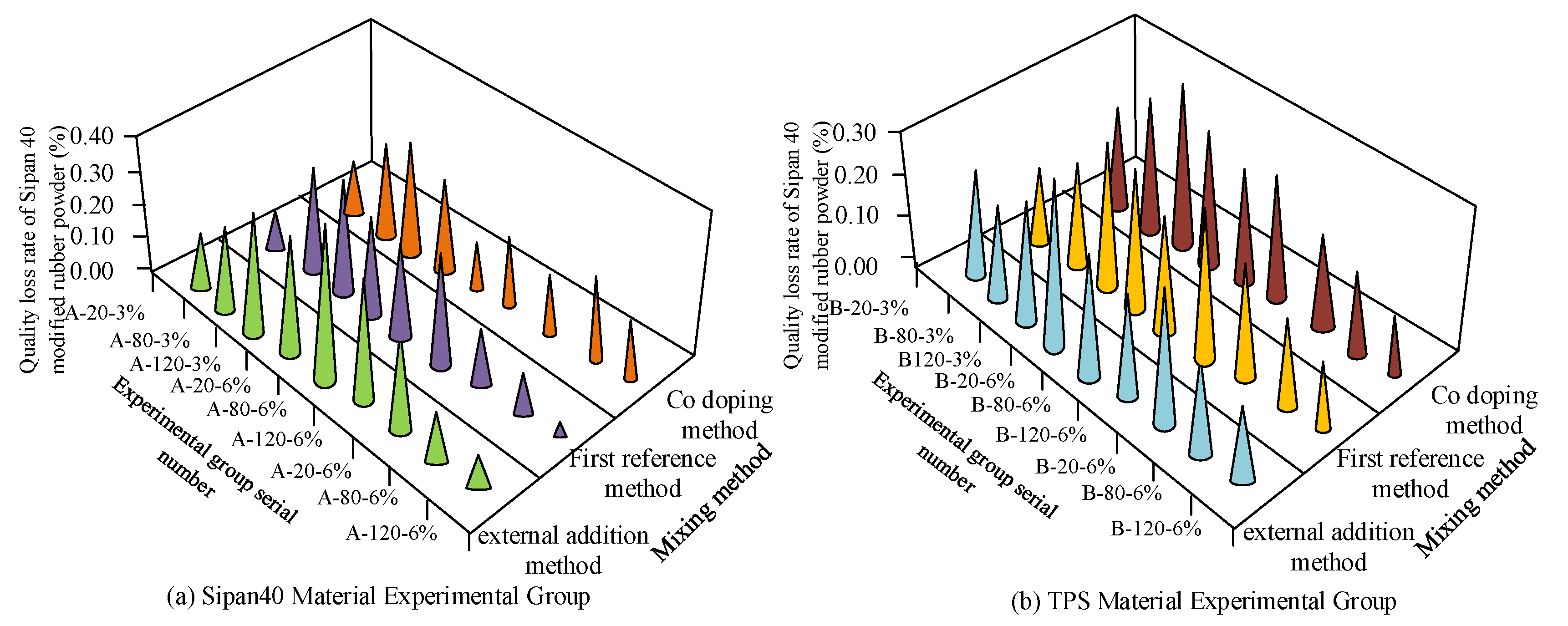
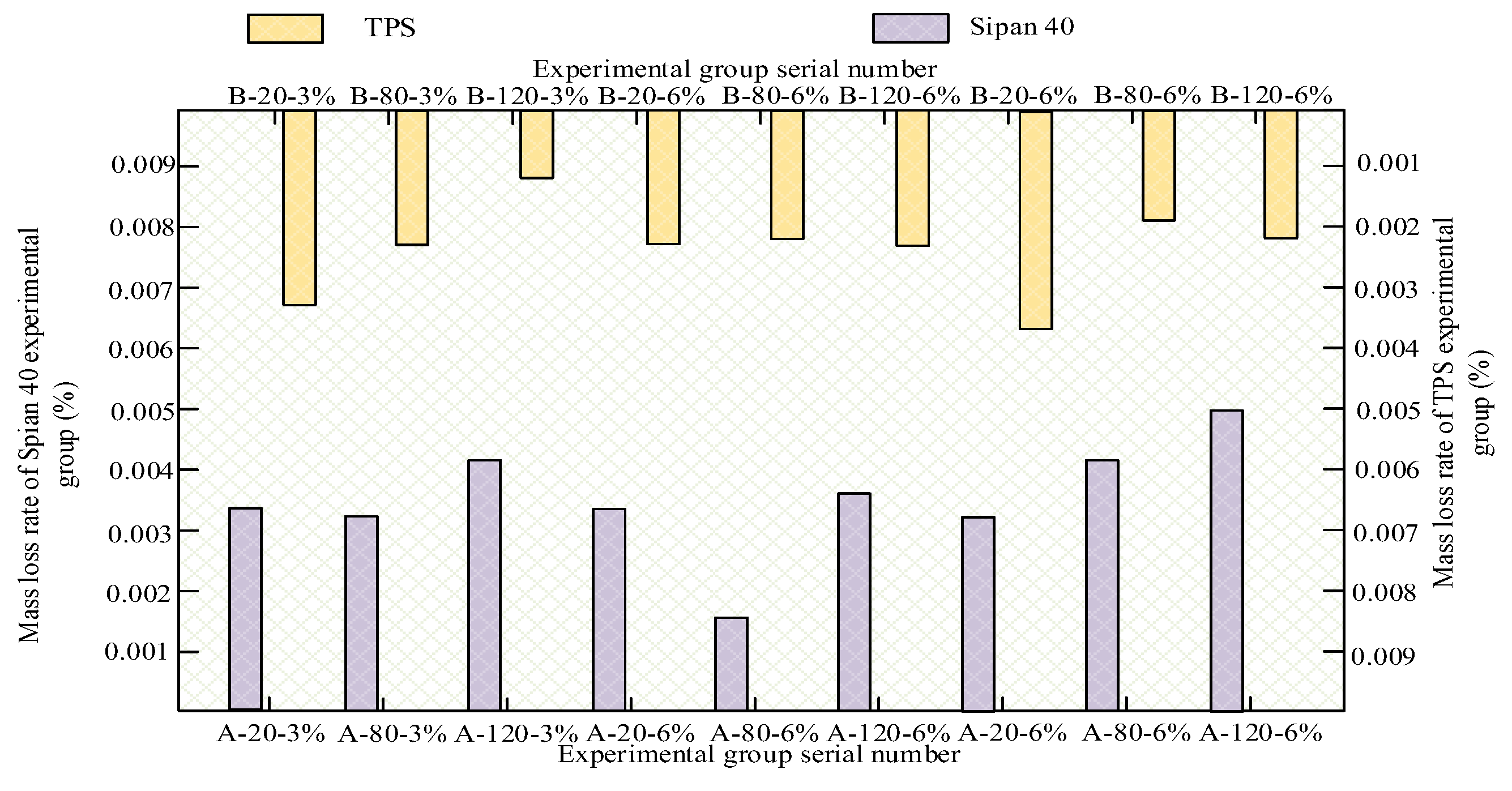
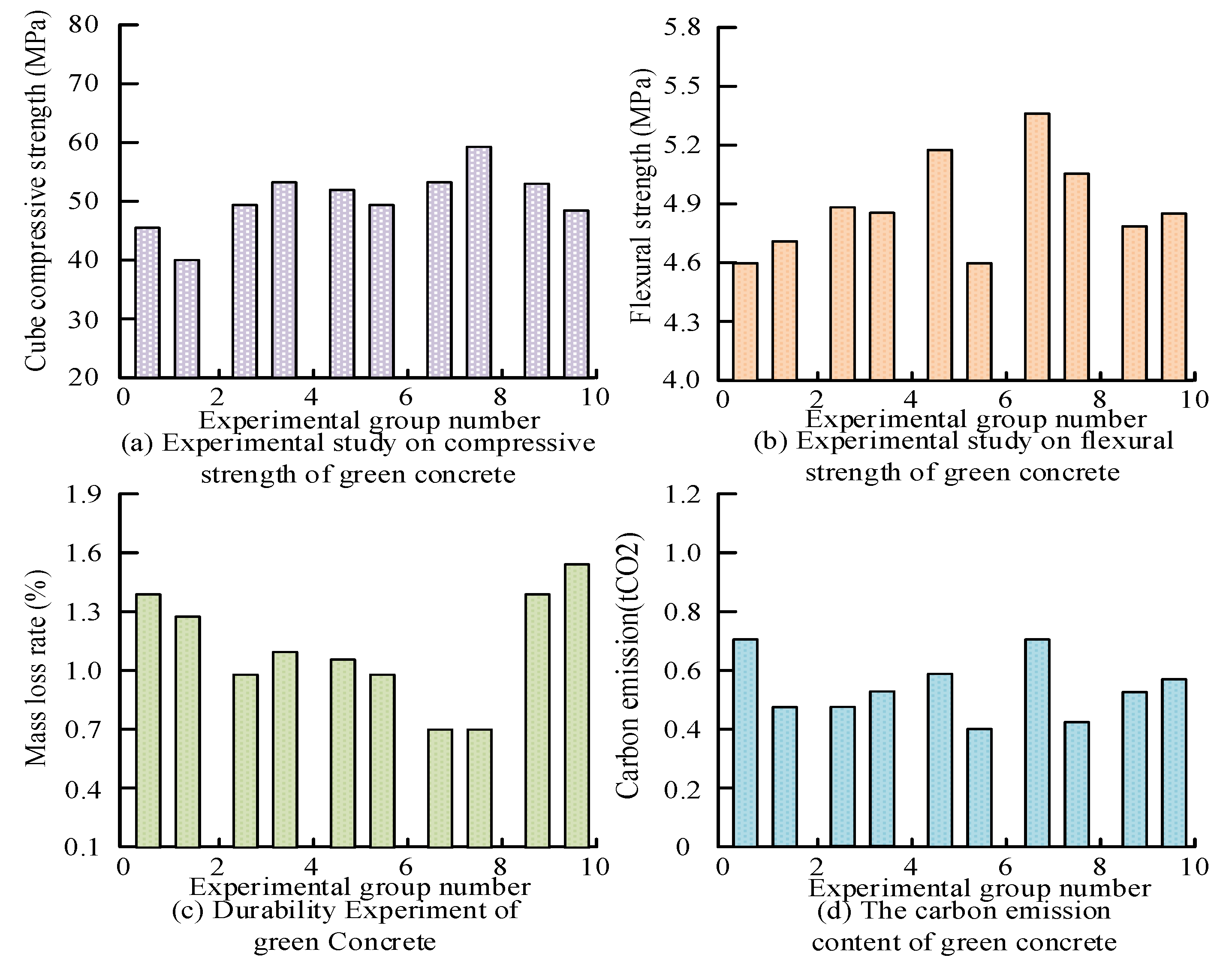
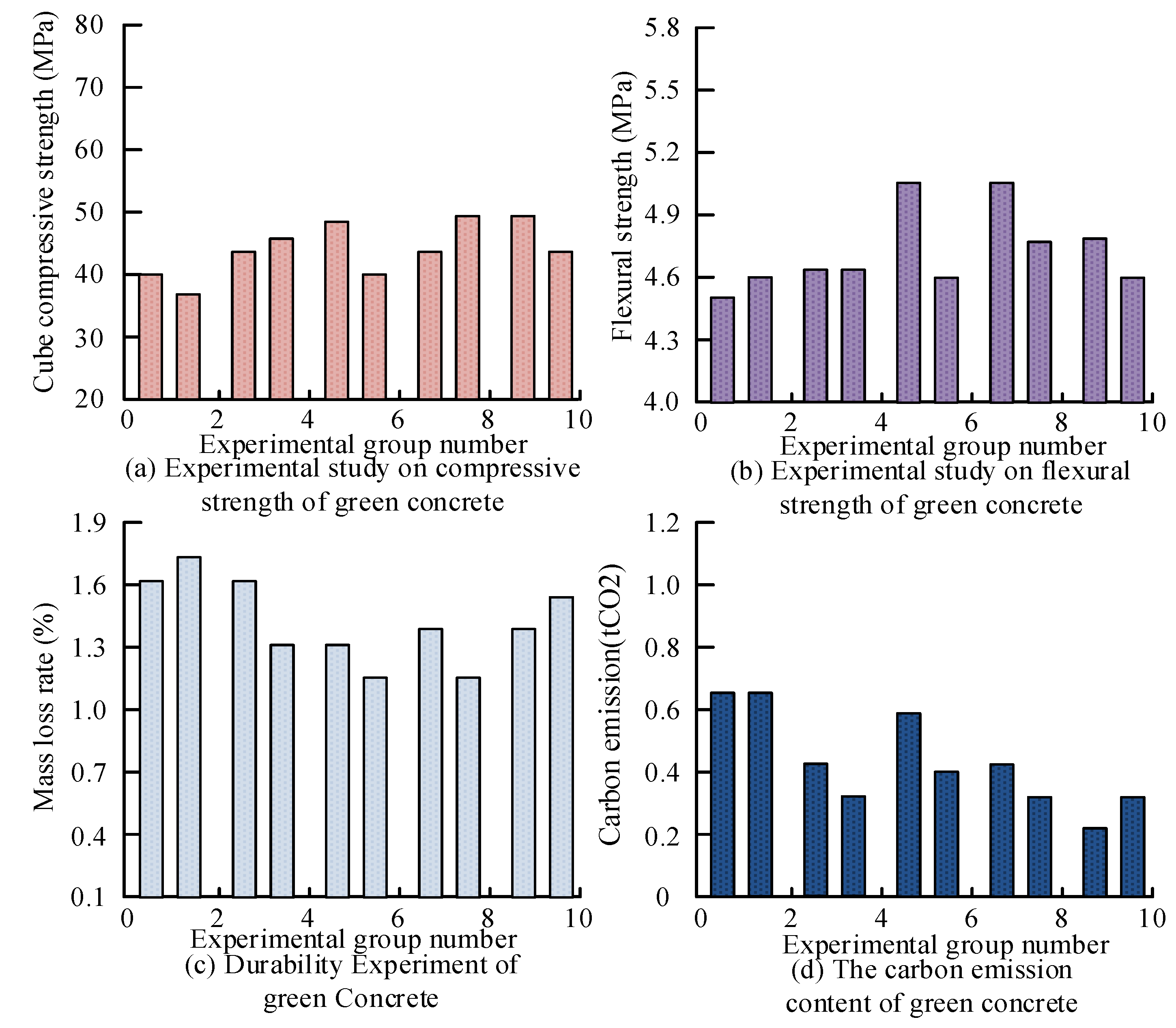
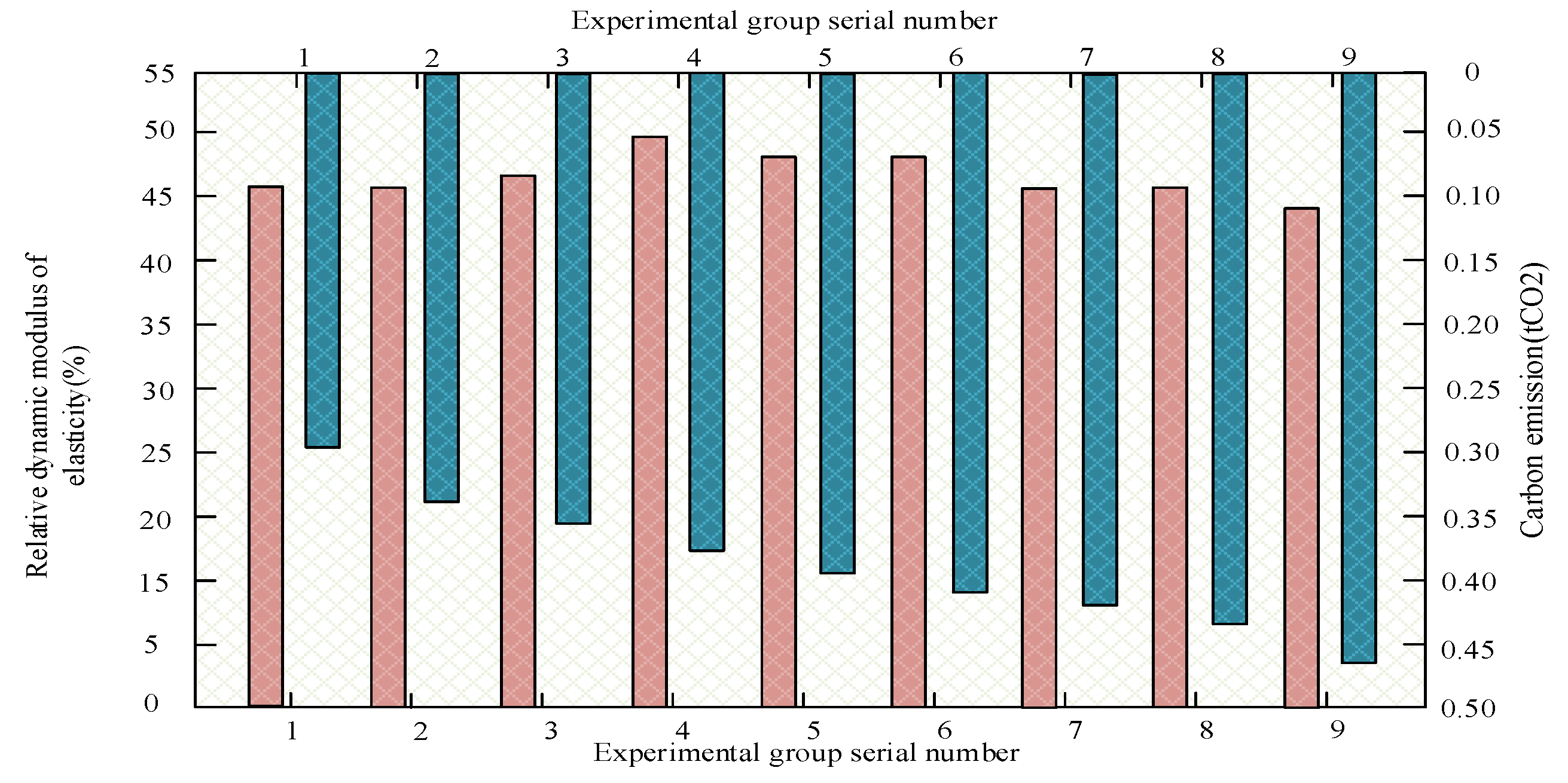
| Group | Cube Compressive Strength (MPa) | Carbon Emission (kg/m3) | ||||
|---|---|---|---|---|---|---|
| 7 d | 14 d | 21 d | 28 d | 35 d | ||
| A-20-3% | 24.3 | 25.71 | 26.8 | 35.3 | 36.1 | 781 |
| A-80-3% | 21.7 | 26.8 | 31.1 | 35.1 | 37.1 | 792 |
| A120-3% | 23.5 | 28.1 | 28.1 | 39.7 | 41.3 | 776 |
| A-20-6% | 24.2 | 29.6 | 36.0 | 38.8 | 43.6 | 732 |
| A-40-6% | 25.3 | 29.8 | 37.6 | 39.3 | 50.6 | 725 |
| A-80-6% | 26.5 | 32.6 | 41.8 | 46.6 | 54.3 | 724 |
| A-120-6% | 22.6 | 27.3 | 32.4 | 34.4 | 45.2 | 713 |
| A-20-6% | 26.2 | 31.3 | 37.8 | 43.3 | 51.0 | 698 |
| A-80-6% | 22.5 | 25.7 | 31.9 | 37.4 | 48.1 | 731 |
| A-120-6% | 23.2 | 25.2 | 32.4 | 37.4 | 37.4 | 788 |
| B-20-3% | 23.4 | 29.0 | 35.3 | 39.2 | 48.2 | 789 |
| B-80-3% | 21.7 | 29.4 | 29.3 | 35.2 | 48.4 | 794 |
| B-120-6% | 26.7 | 26.7 | 37.8 | 35.8 | 43.8 | 814 |
| B-20-6% | 23.4 | 30.1 | 33.9 | 40.0 | 53.5 | 815 |
| B-80-6% | 20.1 | 22.6 | 29.4 | 35.7 | 47.4 | 823 |
| B-120-6% | 19.1 | 19.1 | 25.6 | 30.6 | 45.2 | 811 |
| B-20-9% | 23.2 | 26.3 | 31.9 | 31.9 | 48.0 | 793 |
| B-80-9% | 23.5 | 26.6 | 34.8 | 36.6 | 47.3 | 788 |
| B-120-9% | 21.7 | 26.8 | 31.1 | 35.1 | 51.7 | 794 |
| Group | Cement | Water | Regenerated Pumice | Sand | Water Reducing Agent | Natural Pumice |
|---|---|---|---|---|---|---|
| kg/m3 | kg/m3 | kg/m3 | kg/m3 | kg/m3 | kg/m3 | |
| 1 | 400 | 150 | 0 | 1200 | 11 | 800 |
| 2 | 400 | 150 | 200 | 1000 | 11 | 800 |
| 3 | 400 | 150 | 400 | 800 | 11 | 800 |
| 4 | 400 | 150 | 600 | 600 | 11 | 800 |
| 5 | 400 | 150 | 200 | 1200 | 11 | 600 |
| 6 | 400 | 150 | 400 | 1000 | 11 | 600 |
| 7 | 400 | 150 | 600 | 800 | 11 | 600 |
| 8 | 400 | 150 | 400 | 1200 | 11 | 400 |
| 9 | 400 | 150 | 200 | 1400 | 11 | 400 |
| 10 | 400 | 150 | 600 | 1000 | 11 | 400 |
| Group | Cement | Water | Regenerated Pumice | Sand | Water Reducing Agent | Natural Pumice |
|---|---|---|---|---|---|---|
| kg/m3 | kg/m3 | kg/m3 | kg/m3 | kg/m3 | kg/m3 | |
| 1 | 300 | 150 | 0 | 1300 | 11 | 800 |
| 2 | 300 | 150 | 400 | 1000 | 11 | 800 |
| 3 | 300 | 150 | 500 | 800 | 11 | 800 |
| 4 | 300 | 150 | 600 | 600 | 11 | 800 |
| 5 | 250 | 150 | 350 | 1200 | 11 | 600 |
| 6 | 250 | 150 | 550 | 1000 | 11 | 600 |
| 7 | 250 | 150 | 750 | 800 | 11 | 600 |
| 8 | 200 | 150 | 600 | 1200 | 11 | 400 |
| 9 | 200 | 150 | 400 | 1400 | 11 | 400 |
| 10 | 200 | 150 | 800 | 1000 | 11 | 400 |
| Group | Cement | Water | Regenerated Pumice | Sand | Water Reducing Agent | Natural Pumice | Modified Rubber Powder |
|---|---|---|---|---|---|---|---|
| kg/m3 | kg/m3 | kg/m3 | kg/m3 | kg/m3 | kg/m3 | kg/m3 | |
| 1 | 300 | 150 | 600 | 600 | 11 | 800 | 5 |
| 2 | 300 | 150 | 600 | 600 | 11 | 800 | 10 |
| 3 | 300 | 150 | 600 | 600 | 11 | 800 | 15 |
| 4 | 300 | 150 | 600 | 600 | 11 | 800 | 20 |
| 5 | 300 | 150 | 600 | 600 | 11 | 800 | 25 |
| 6 | 300 | 150 | 600 | 600 | 11 | 800 | 30 |
| 7 | 300 | 150 | 600 | 600 | 11 | 800 | 35 |
| 8 | 300 | 150 | 600 | 600 | 11 | 800 | 40 |
| 9 | 300 | 150 | 600 | 600 | 11 | 800 | 45 |
Disclaimer/Publisher’s Note: The statements, opinions and data contained in all publications are solely those of the individual author(s) and contributor(s) and not of MDPI and/or the editor(s). MDPI and/or the editor(s) disclaim responsibility for any injury to people or property resulting from any ideas, methods, instructions or products referred to in the content. |
© 2024 by the authors. Licensee MDPI, Basel, Switzerland. This article is an open access article distributed under the terms and conditions of the Creative Commons Attribution (CC BY) license (https://creativecommons.org/licenses/by/4.0/).
Share and Cite
Chen, X.; Li, X.; Song, X. Structural Design and Performance Optimization of Green Concrete Based on Recycled Pumice and Modified Rubber Powder. Appl. Sci. 2024, 14, 3372. https://doi.org/10.3390/app14083372
Chen X, Li X, Song X. Structural Design and Performance Optimization of Green Concrete Based on Recycled Pumice and Modified Rubber Powder. Applied Sciences. 2024; 14(8):3372. https://doi.org/10.3390/app14083372
Chicago/Turabian StyleChen, Xinyi, Xiaoming Li, and Xiaosheng Song. 2024. "Structural Design and Performance Optimization of Green Concrete Based on Recycled Pumice and Modified Rubber Powder" Applied Sciences 14, no. 8: 3372. https://doi.org/10.3390/app14083372
APA StyleChen, X., Li, X., & Song, X. (2024). Structural Design and Performance Optimization of Green Concrete Based on Recycled Pumice and Modified Rubber Powder. Applied Sciences, 14(8), 3372. https://doi.org/10.3390/app14083372





